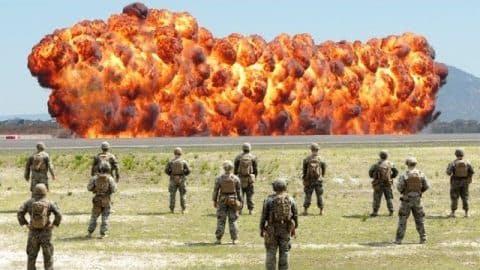
YouTube / Not What You Think
One of the most effective tactics of war is to bombard your enemy’s airfields, crippling their supporting forces and hindering any counterattacks in the future.
But if an airfield was bombed, the first step to recovery isn’t to get the construction crew out right away. It has to do with these:

These are explosive timed fuses, which are going to help the already-bombarded airfield by…….. exploding the explosives away.
Unexploded ordnance and other hazards present a significant problem when repairing airfields. Typically, the Explosive Ordnance Disposal (EOD) team is in charge of removing any explosives that have been left behind.
But the thing is, collecting these bombs can be quite a time-consuming task. The solution to this is Rapid Explosive Hazard Mitigation or REHM.
The first step of REHM is to quickly collect large swaths of ordnance with the help of heavy equipment.

Some of these are remotely operated to keep personnel safe in case of an unexpected explosion.
Afterward, the collected bombs are then neutralized by using smaller explosives. To create a time fuse, the igniter is first attached to one end of the safety fuse, with the detonator attached to the other end. Once everyone has a sufficient number of time fuses, all team members then place the fuses around their necks before starting “the walk”. Some even swing them around to get them straightened out.

Upon reaching any hazard, the team member simply pulls the igniter to set off the safety fuse. They then insert the detonator into the charge and place it close to the suspected ordnance, allowing the team to neutralize the area before RADR does its work.
With the bombs out of the way, the Rapid Airfield Damage Repair (RADR) team will then repair the airfield back to its fully functional state. RADR first removes the debris, marks the areas needed to be fixed, and then begins cutting the damaged areas out using a massive diamond saw.

The excavated areas are then filled using various materials (ex. Crushed limestone). A rapid-setting concrete is then poured on top. After letting it set for 2 hours, the aircraft can then resume operating over it.